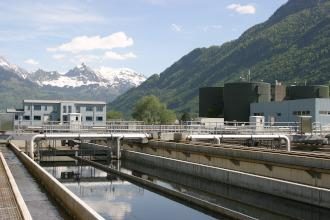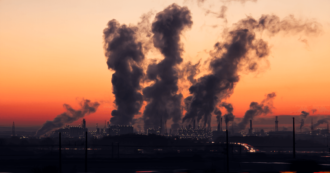Water Pollution
By Harry Cooper – Water pollution includes any water contaminated with harmful substances or chemicals that makes its way into our dwindling freshwater supply. This contaminated water is called wastewater and is produced both in our homes and in industry.
Sources of Wastewater Pollution
Wastewater can be divided into three main categories. These categories include storm-water, domestic wastewater and industrial wastewater.
Storm-water is created when rain or snow melts and runs off the surface of land into waterways. It often contains pollutants like oil, trash, and pesticides from roads and other developed areas.
Domestic wastewater is any wastewater that comes from homes, businesses, or other buildings. This wastewater comes from cleaning, bathing, and flushing toilets.
Industrial wastewater includes any kind of pollutant that is created by factories or businesses. These industrial processes can add many different types of contaminants, depending on the process.
Effects of Wastewater Pollution
Wastewater can become contaminated from many different kinds of pollutants. Because of this, the different effects it has on human health and the environment can vary greatly.
Effect on the Environment
When wastewater gets into the environment it can have a big impact on ecosystems. This impact primarily comes from industrial usage of harmful inorganic chemicals such as nitrogen and phosphorus. When nitrogen and phosphorus get into water supplies, they can cause a chemical process called eutrophication which depletes the dissolved oxygen until nothing can live there. Eutrophication, along with other toxic chemicals found in water, kill off marine life and destroy ecosystems around the world.
Effect on human health
Wastewater pollution can also be a human health concern when it gets into potable water and drinking water supplies. This is mainly caused by pathogenic bacteria found in organic chemicals present in domestic wastewater. Oftentimes, wastewater, containing microorganisms, bacteria, and other pathogens, gets into freshwater sources such as lakes or ground water and causes diseases such as cholera or cryptosporidiosis.
Wastewater Treatment
With so many human activities causing water to become harmful to health and the environment, the only way to remedy wastewater pollution is through wastewater treatment. Wastewater treatment is a process that makes use of biological, chemical and physical processes to remove harmful substances from contaminated water. This allows the treated wastewater to be clean enough for reuse as an industrial, agricultural or domestic water source.
Because there are so many different chemicals that can be found in wastewater there are also different types of water treatment plants. These plants can mainly be divided into two groups, industrial and domestic water treatment.
While the procedure at each type of water treatment plant is very similar, there are some notable differences. An industrial wastewater treatment plant is typically installed on site at a factory, and uses water treatment for the specific contaminants being put into the water at that factory. A domestic water treatment plant treats water at a centralized location for all the domestic wastewater and storm-water in a specific area.
Water Treatment Process
A domestic water treatment plant and an industrial water treatment plant treat for different chemicals found in their water supply. However, the actually treatment process for improving water quality is very similar.
Water treatment found at water treatment plants can usually be divided into three main stages. The first stage of improving water quality is a filtration process called sedimentation. In this stage, water passes through filter beds which filter out larger particles.
The next stage at the water plant is meant to remove any harmful substances not removed in the initial filtration. This can be done in a number of ways. One was is through further, more thorough, filtration of the already filtered water, this provides further disinfection of the water. The coagulation process is a chemical treatment, whereby the substances are manipulated by electrostatic charges. Another means of disinfection is through activated sludge. This is a biological process that involves exposing the water to microorganisms for an extended period of time that naturally breakdown harmful substances and created treated water.
The third stage of disinfection and improving water quality involves specifically removing nitrates and phosphates from the water supply. This can be done through activated carbon or further filtration.
Effects of Water Treatment Plants
While wastewater pollution remains a problem in today’s world, water treatment plants are incredibly efficient at creating drinking water and replenishing water resources. On average, water treatment is able to remove up to 90% of contaminants in wastewater and all the water treatment plants in the US can treat up to 34 billion gallons of wastewater a day. As a result, wastewater treatment plants are one of our greatest defenses in the fight to keep our freshwater sources.
Water Treatment and Religion
Water pollution is threatening to destroy one of the world’s earliest religions. Sheikh Anmar Ayid is part of the Mandaean religion, which is a pre-Abrahamic faith that’s native to the Fertile Crescent. Mandeans believe the Tigris and Euphrates rivers are sacred and flow from heaven. Their religious leaders are only supposed to drink from and eat food washed in the waters of these rivers, but the rivers have become so polluted that drinking from them is extremely dangerous.
As a UNEP article on the Mandaean’s describes: “Eighty per cent of all wastewater goes untreated, and much of finds its way back into rivers and lakes: “This untreated wastewater is endangering the Mandaeans’ way of life and future. “Our daily life depends on nature,” explains Sheikh Ayid, “but nature is not being kind to us.” If we can do a better job treating our wastewater, nature will be kind to us in return.
* Featured image source







